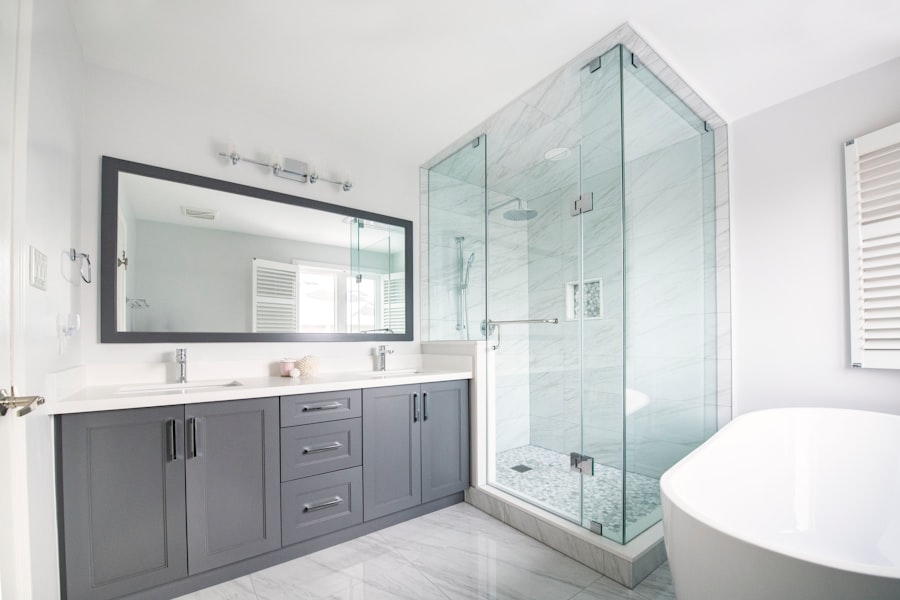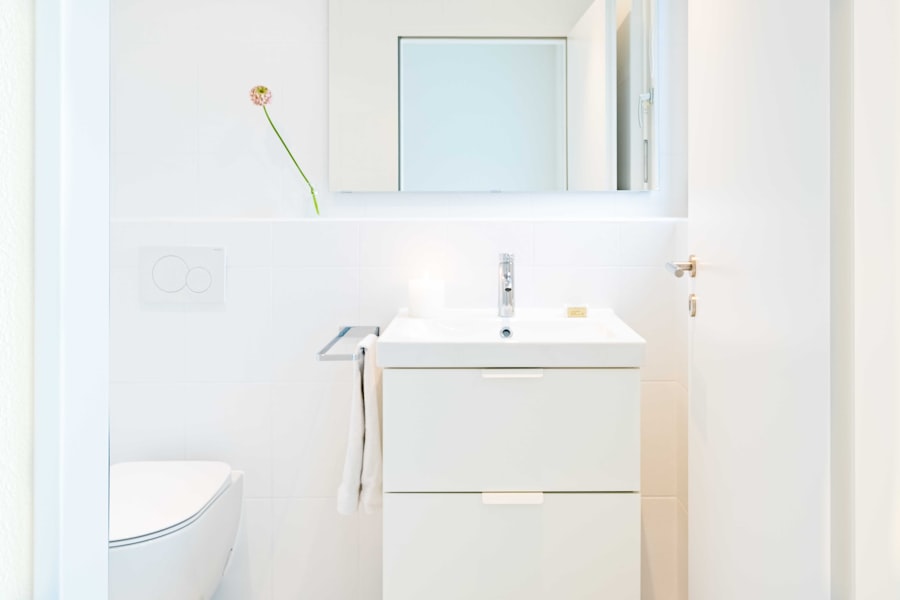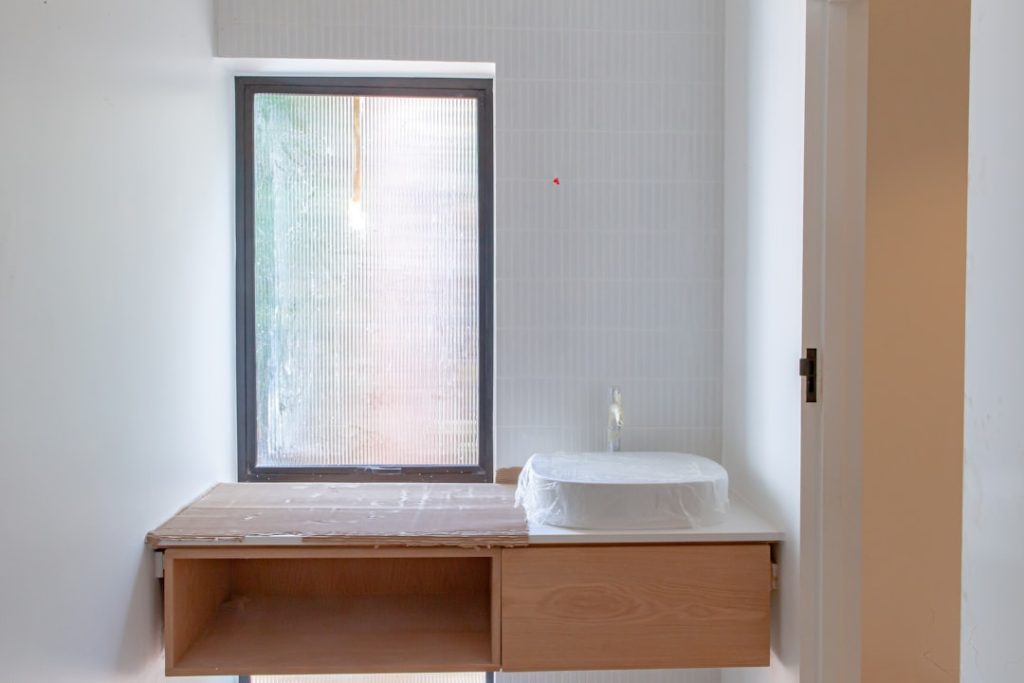When embarking on a bathroom renovation, one of the most critical steps is finding the right professionals to bring your vision to life. The process begins with thorough research. Homeowners should seek out licensed contractors who specialize in bathroom renovations.
This can be done through online platforms, local directories, or recommendations from friends and family. It’s essential to check their credentials, including licenses, insurance, and any relevant certifications. A well-established contractor will have a portfolio of past projects that can provide insight into their style and quality of work.
Once you have a shortlist of potential contractors, it’s advisable to conduct interviews. Prepare a list of questions that cover their experience, project timelines, and how they handle unexpected challenges. It’s also beneficial to ask for references from previous clients.
Speaking directly with past customers can reveal a lot about the contractor’s reliability, communication skills, and overall satisfaction with the completed work. Additionally, consider involving an interior designer early in the process. A designer can help refine your ideas and ensure that the layout and aesthetics align with your vision while also working seamlessly with the contractor.
Key Takeaways
- Hire experienced professionals to ensure quality and smooth renovation.
- Plan a realistic budget covering all aspects of the project.
- Select durable, stylish materials that fit your design and budget.
- Use space-saving solutions to maximize functionality in small bathrooms.
- Incorporate energy-efficient fixtures to reduce costs and environmental impact.
Budgeting for Your Renovation
Budgeting is a fundamental aspect of any renovation project, particularly in a space as intricate as a bathroom. Establishing a clear budget from the outset helps to manage expectations and avoid overspending. Begin by determining the overall amount you are willing to invest in the renovation.
This figure should encompass all aspects of the project, including labor, materials, permits, and any unexpected costs that may arise during construction. A common rule of thumb is to allocate about 20% of your total budget for unforeseen expenses, as renovations often uncover hidden issues that need addressing. Once you have a budget in place, break it down into specific categories such as plumbing, electrical work, fixtures, and finishes.
This detailed approach allows for better tracking of expenses as the project progresses. It’s also wise to prioritize your spending based on what aspects of the renovation are most important to you. For instance, if high-quality fixtures are a priority, you might choose to save on less visible elements like cabinetry or flooring.
Additionally, consider exploring financing options if your budget is tight; many homeowners opt for personal loans or home equity lines of credit to fund their renovations.
Choosing the Right Materials

Selecting the right materials is crucial for both the aesthetic appeal and functionality of your bathroom renovation. The materials you choose will significantly impact the overall look and durability of the space. Start by considering the style you want to achieve—whether it’s modern, traditional, or somewhere in between—and select materials that complement that vision.
For example, if you’re aiming for a contemporary look, sleek porcelain tiles and minimalist fixtures may be ideal choices. Durability is another key factor when choosing materials for a bathroom. Given the high moisture levels in this space, it’s essential to select materials that can withstand humidity and resist mold and mildew growth.
For flooring, options like ceramic tiles or luxury vinyl planks are both stylish and practical. When it comes to countertops, quartz is an excellent choice due to its non-porous nature and resistance to staining. Additionally, consider eco-friendly materials such as reclaimed wood or recycled glass, which not only enhance the aesthetic but also contribute to sustainability efforts.
Maximizing Space in a Small Bathroom
| Space-Saving Strategy | Metric/Measurement | Benefit | Example |
|---|---|---|---|
| Wall-mounted sink | Frees up floor space by approx. 2-3 sq ft | Increases usable floor area for movement or storage | Sink mounted at 32-36 inches height |
| Corner shower stall | Uses corner space of approx. 36″x36″ | Maximizes shower area without encroaching on room | Neo-angle or quadrant shower enclosures |
| Over-the-toilet storage | Utilizes vertical space up to 5 feet above toilet | Provides additional shelving without floor footprint | Open shelves or cabinets mounted above toilet tank |
| Sliding or pocket doors | Eliminates door swing space of approx. 20-30 inches | Increases usable bathroom floor area | Door slides into wall cavity or along wall |
| Compact fixtures | Fixtures sized 10-20% smaller than standard | Reduces space consumption while maintaining function | Smaller toilets, sinks, and vanities |
| Recessed shelving | Creates storage space 4-6 inches deep within walls | Keeps items organized without protruding into room | Shower niches and medicine cabinets |
In smaller bathrooms, maximizing space is often a top priority. Clever design choices can make even the tiniest bathrooms feel more spacious and functional. One effective strategy is to utilize vertical space by installing tall cabinets or shelving units that draw the eye upward.
This not only provides additional storage but also creates an illusion of height in the room. Floating vanities are another excellent option; they free up floor space and make the area feel less cramped. Another way to enhance space is through strategic lighting choices.
Bright, well-placed lighting can open up a small bathroom significantly. Consider incorporating layered lighting with overhead fixtures combined with sconces or LED strips around mirrors. Mirrors themselves can also play a vital role in creating a sense of space; large mirrors reflect light and give the illusion of depth.
Additionally, opting for clear glass shower doors instead of bulky curtains can visually expand the area while maintaining privacy.
Adding Luxury Touches
Incorporating luxury touches into your bathroom renovation can elevate the entire experience and create a spa-like atmosphere at home. One popular way to achieve this is through high-end fixtures such as rainfall showerheads or freestanding soaking tubs that serve as focal points in the room. These elements not only enhance functionality but also add an element of indulgence that transforms daily routines into luxurious experiences.
Another way to infuse luxury into your bathroom is through thoughtful details like heated floors or towel warmers. These features provide comfort during colder months and add an extra layer of sophistication to the space. Additionally, consider integrating smart technology into your bathroom design; features such as smart mirrors with built-in lighting and Bluetooth speakers can enhance convenience while providing a modern touch.
High-quality finishes like brushed gold or matte black hardware can also contribute to a luxurious aesthetic without overwhelming the overall design.
Updating Fixtures and Hardware

Updating fixtures and hardware is one of the most straightforward ways to refresh your bathroom without undergoing a complete renovation. Swapping out old faucets, showerheads, and cabinet handles can dramatically change the look of your space while improving functionality. When selecting new fixtures, consider both style and efficiency; modern fixtures often come with water-saving features that reduce consumption without sacrificing performance.
In addition to faucets and showerheads, don’t overlook other hardware elements such as towel bars, toilet paper holders, and cabinet knobs. Coordinating these elements in terms of finish—whether it’s polished chrome, brushed nickel, or oil-rubbed bronze—can create a cohesive look throughout the bathroom. Furthermore, investing in high-quality fixtures ensures longevity and reduces the need for frequent replacements, making it a wise choice for homeowners looking to enhance their space sustainably.
Incorporating Energy-Efficient Features
In today’s environmentally conscious world, incorporating energy-efficient features into your bathroom renovation is not only beneficial for the planet but can also lead to significant cost savings over time. Start by considering water-efficient fixtures such as low-flow toilets and faucets that reduce water usage without compromising performance. These fixtures are designed to maintain pressure while using less water, making them an excellent choice for eco-minded homeowners.
Lighting is another area where energy efficiency can be improved significantly. Replacing traditional incandescent bulbs with LED lighting not only reduces energy consumption but also provides better illumination for tasks such as grooming or applying makeup. Additionally, consider installing motion sensors for lights; these devices automatically turn off lights when no one is present in the room, further conserving energy.
By integrating these features into your renovation plan, you can create a bathroom that is both stylish and sustainable.
Maintaining Your New Bathroom
Once your bathroom renovation is complete, maintaining its beauty and functionality requires ongoing care and attention. Regular cleaning is essential to prevent mold and mildew buildup in such a moisture-prone environment. Use gentle cleaning products that are safe for your chosen materials; harsh chemicals can damage surfaces over time.
Establishing a routine cleaning schedule will help keep surfaces looking fresh and new. In addition to regular cleaning, periodic inspections of plumbing fixtures and hardware are crucial for identifying potential issues before they escalate into costly repairs. Check for leaks around faucets and under sinks regularly; even small leaks can lead to significant water damage if left unaddressed.
Furthermore, ensure that caulking around tubs and showers remains intact; this prevents water from seeping into walls or floors where it can cause mold growth or structural damage. By staying proactive about maintenance, you can enjoy your newly renovated bathroom for years to come while preserving its value and appeal.




